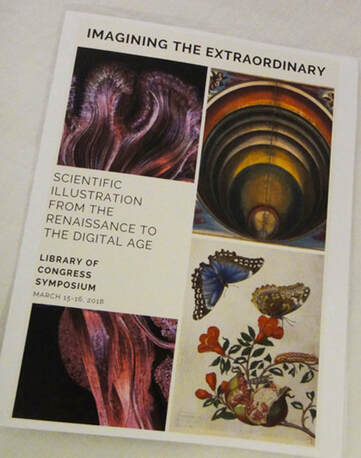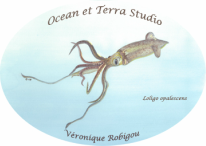
March 15 and 16, 2018 – Imagining the Extraordinary: Scientific Illustration from the Renaissance to the Digital Age – Library of Congress Symposium
A rare opportunity for 2 days of immersion in the nature of scientific illustration at the Library of Congress in Washington, DC! Inspirational speakers from all over the world gathered in the impressive and colorful Thomas Jefferson Building on Capitol Hill to share their expertisriginal documents and fine prints graciously displayed for all to examine by the Rare Book and Special Collections Division of the Library of Congress. Can you imagine the thrill of looking at sketches of Galileo’s moon e and passion for science visualization and the multiple forms that it can take. Invited to travel through time since the Renaissance the audience reflected on the history and evolution of scientific illustration, and its influence on the way people understand the world. The dialogues triggered by the presentations in a spirit of inclusion and discovery demonstrated the power of scientific illustration at extending the reach of human understanding of our place in the natural world and at advancing civilization.
Through early printed images the audience vicariously mapped the sky with Nicolaus Copernicus (De revolutionibus orbium coelestium, 1514), observed the craters of the moon for the first time with Galileo Galilei (Sidereus nuncius, 1610) and explored the microscopic world with Robert Hooke (Micrographia, 1665). Today, with technological and multi-dimensional visualizations, the general public can experience all scales from the universe to the molecule. Superposing the scale of galaxies to familiar settings in planetariums gives audiences a feel for the vastness of the universe. And visual languages infused with choices of color, texture, cropping, context, drama, or scale flawlessly lead our eyes from the smoothness of a large object to the complex density of details of individual elements that compose that object. We were exposed to subjects as varied as the death of stars, or the doodling of undergraduate students practicing the scientific process, the birth of early naturalism through the exquisite renderings of the life cycle of insects by Maria Sibella Merian (1647-1717) or the infographics artist’ challenges to tell a science story.
Scientists, rare books and digital librarians, technologists, and artists turned into kids in a candy store during this inspiring symposium. And the cherry on the cake was the awe at the still vibrant colors of Pierre Joseph Redouté’s botanical illustrations!
YouTube:
• Imagining the Extraordinary: The Unseen
• Imagining the Extraordinary: The Heavens
• Imagining the Extraordinary: The Earth
• Imagining the Extraordinary: The Inspired





 RSS Feed
RSS Feed